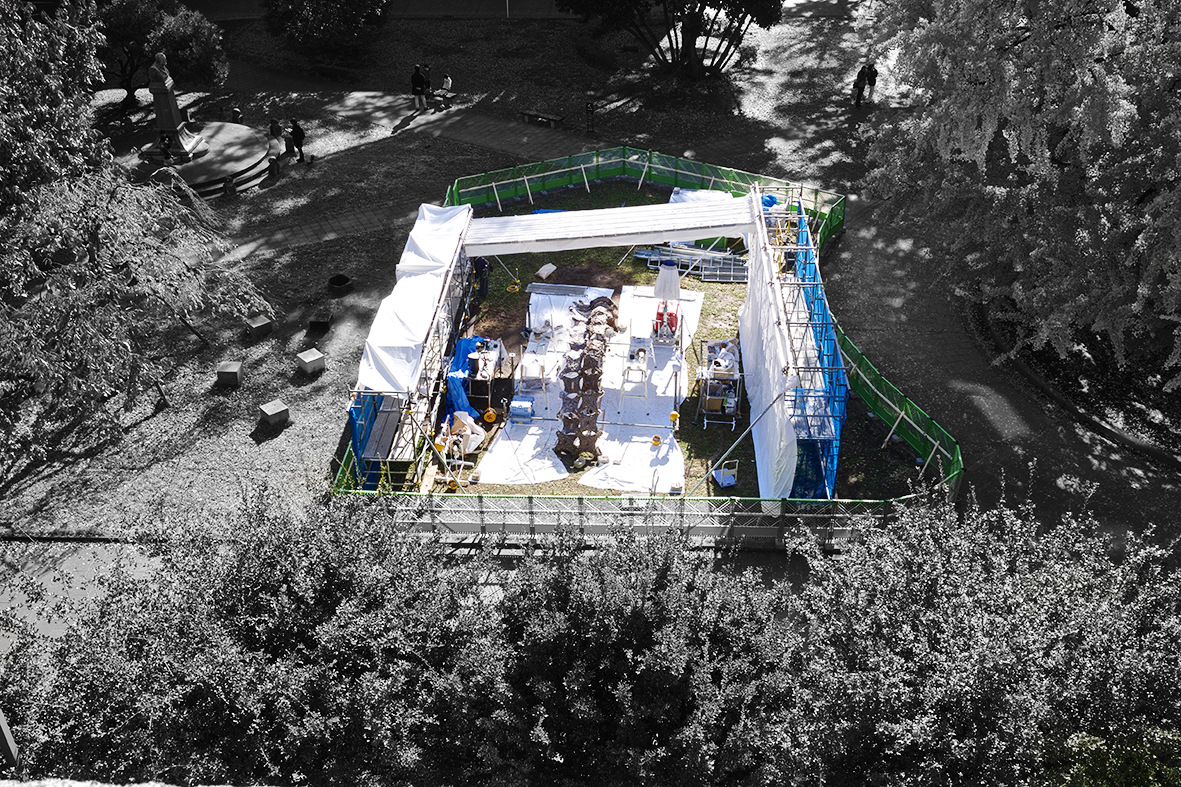
Two arches completed on-site.
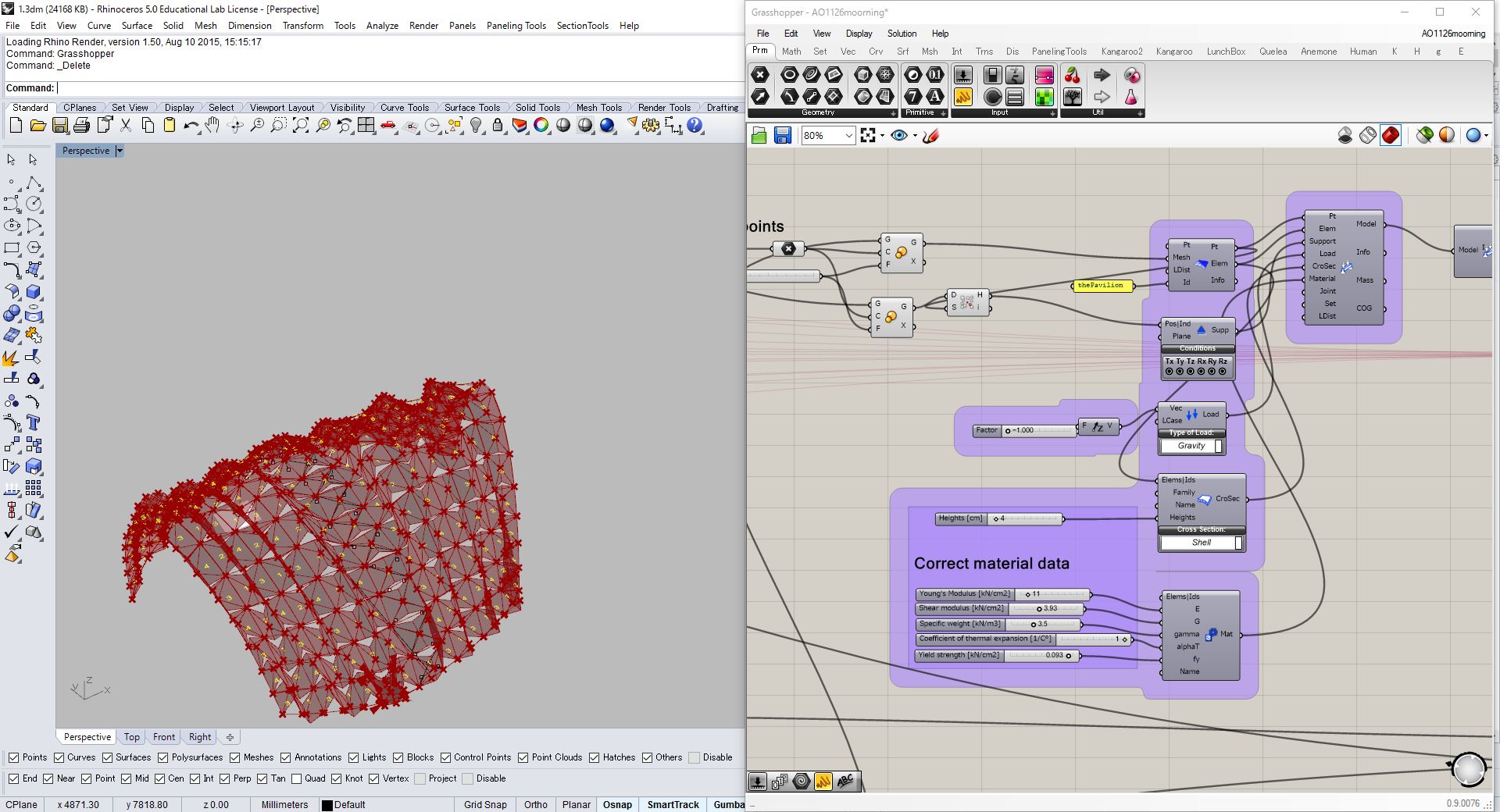
Structural optimization.

Guidance sequence.
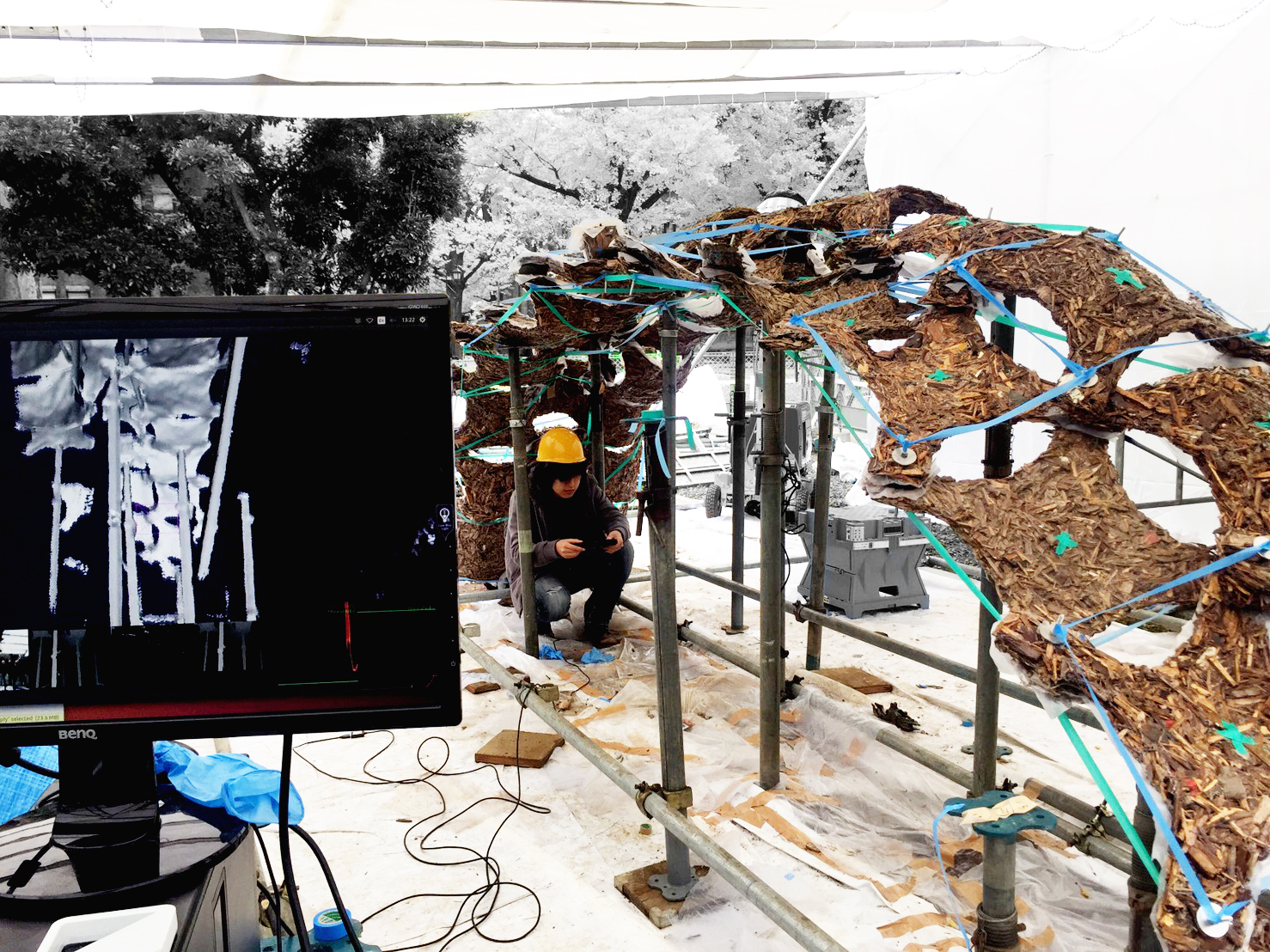
Scanning process on-site.
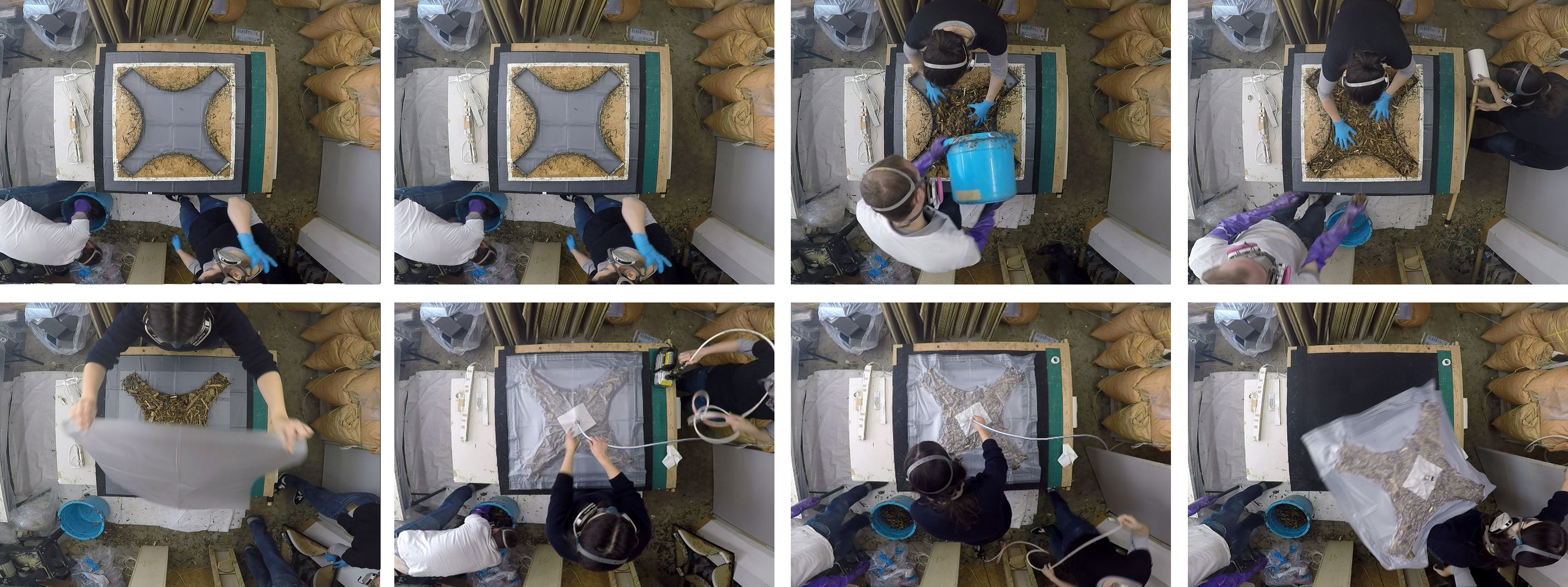
Panel-making process.
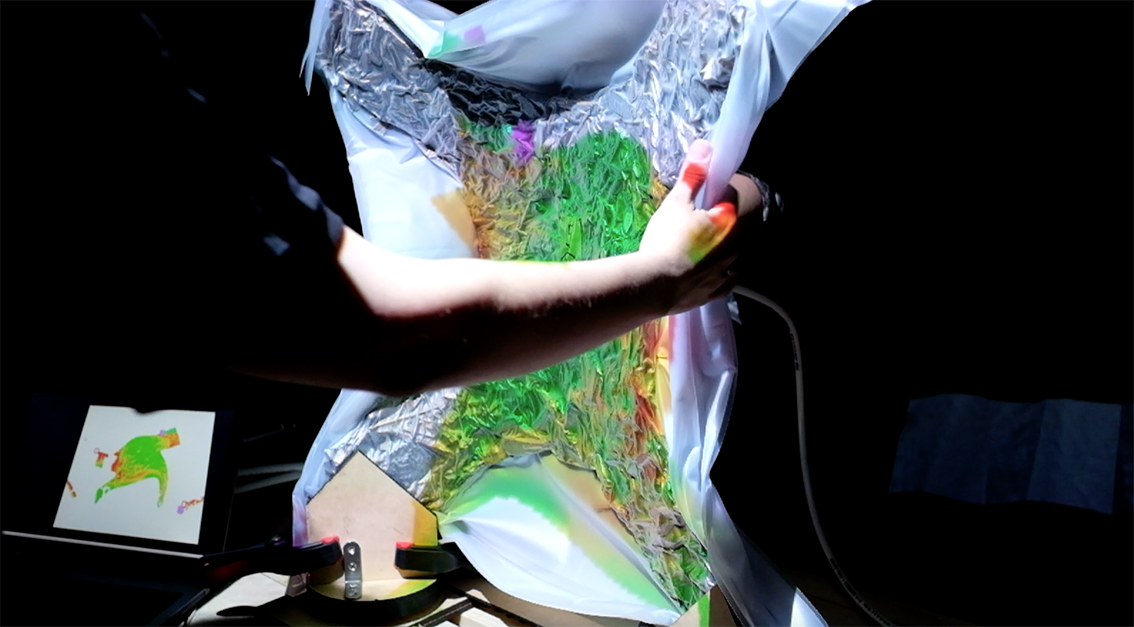
Preparation for guidance.

Scanning sequence.

Two arches completed on-site.

Structural optimization.

Guidance sequence.

Scanning process on-site.

Panel-making process.

Preparation for guidance.

Scanning sequence.
The two images show the stages of panel production used for the 2016 pavilion project.
Panel Bag Sealing Steps (image 1):
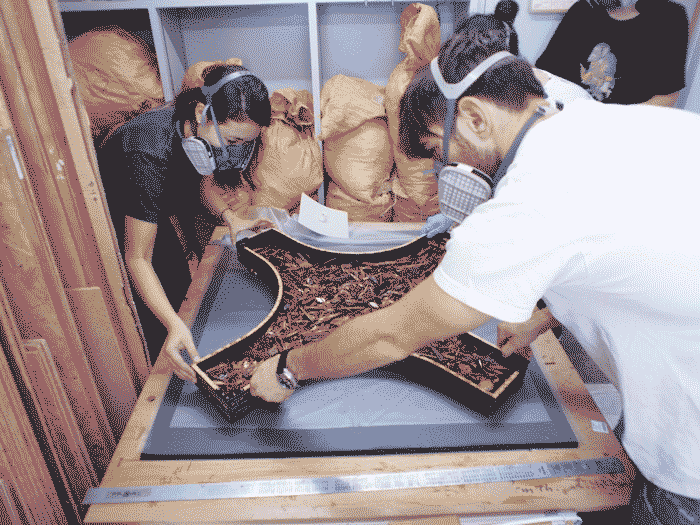
Step 1: Wood chips are mixed with resin and poured into a pre-made wooden frame, which sits on top of a double layer of plastic bags to decrease possibility of holes forming.
Step 2: The frame is removed and another double layer of plastic is put on top of the wood chips. The outer bag is then closed with a heat sealer. Two adjacent lines of sealant help to prevent air leakage during vacuuming.
Step 3: The panel is vacuumed and any small holes that may be produced due to the combination of sharp wood chips and high pressure are taped.
Step 4: Reflective marker guidance system tracking points are applied. This is for the panel shaping process, which comes next.
Panel Shaping Process (image 2):
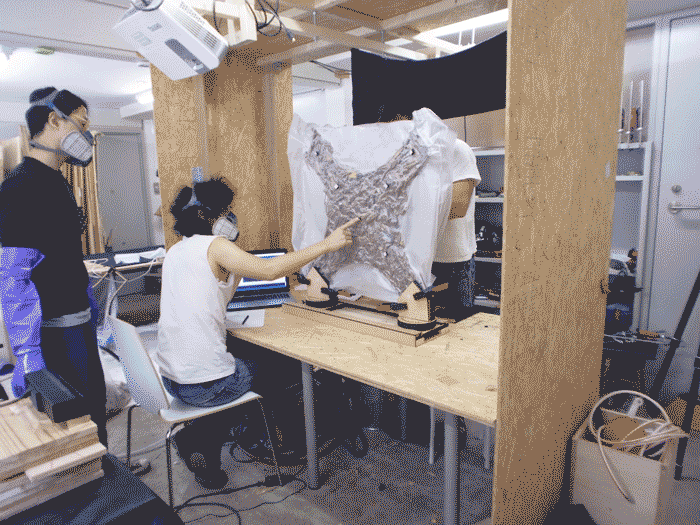
A Kinect camera uses an infrared projector to detect the contrast between reflective markers and the background. When it finds a point of contrast it produces a tackable point, which is then compared to predetermined points in the computer model. The manipulation of the panel is articulated according to the difference between the points on the model and the points (reflective markers) on the actual panel. After the panel has been shaped, the points are re-scanned to quantify the difference between the physical and computer models. A light-absorbing cloth is used as a backdrop to create total contrast between the panel and its environment. This allows the physical panel to be easily tracked and manipulated in space.
Please join us on Saturday, November 19 in Lecture Hall 15 of Engineering Building #1 for a lecture from Marcos Novak. Novak is the Director of transLAB in the Media Arts and Technology Program at the University of California, Santa Barbara.
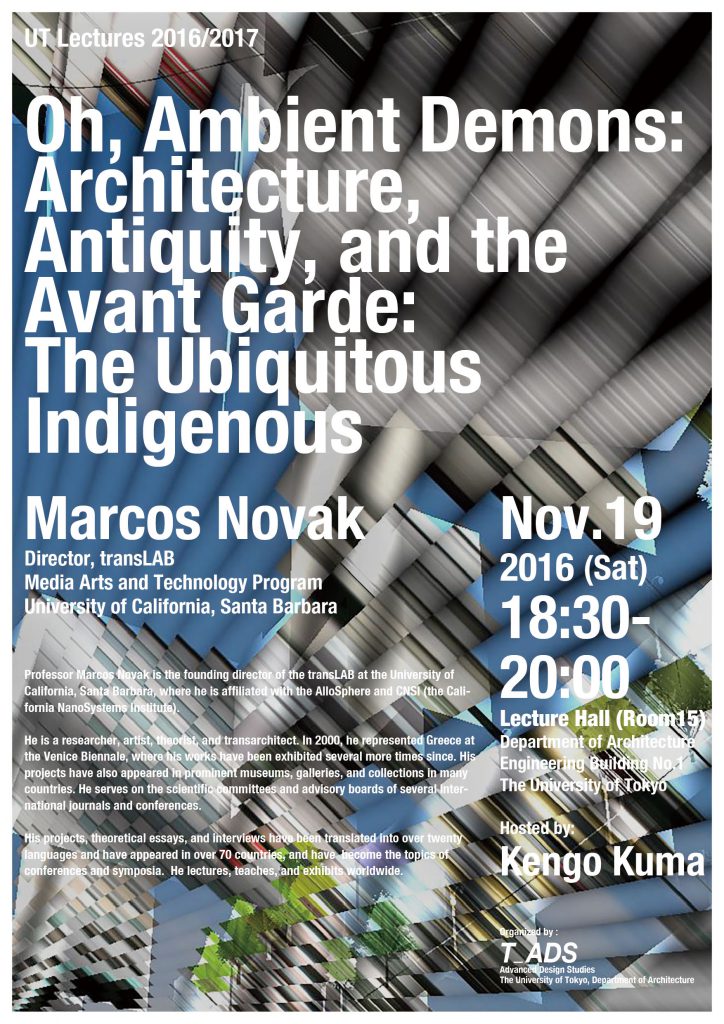
Professor Marcos Novak is the founding director of the transLAB at the University of California, Santa Barbara, where he is affiliated with the AlloSphere and CNSI (the California NanoSystems Institute).
He is a researcher, artist, theorist, and transarchitect. In 2000, he represented Greece at the Venice Biennale, where his works have been exhibited several more times since. His projects have also appeared in prominent museums, galleries, and collections in many countries. He serves on the scientific committees and advisory boards of several international journals and conferences.
His projects, theoretical essays, and interviews have been translated into over twenty languages, have appeared in over 70 countries, and have, and have become the topics of conferences and symposia. He lectures, teachers, and exhibits worldwide.
Please join us at 18:30 on November 15, 2016 in room #15 of Engineering Building #1 for a lecture from Australian architect John Wardle.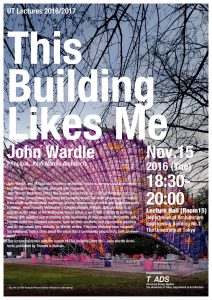
Lecturer: John Wardle (Principal, John Wardle Architects)
Lecture Title: This Building Likes Me
Date: November 15, 2016
Time: 18:30-20:00
Location: Lecture Hall #15 (Room 15), Engineering Building #1, the University of Tokyo
Lecture Description: John Wardle, one of Australia’s leading architects, explores the ways buildings weave together landscape, history, memory, and materials.
John Wardle Architects (JWA) has gained a reputation for creating buildings that connect to their surroundings in subtle yet powerful ways. The work ranges across scales: from small-scale domestic dwellings, to large commercial projects and major university buildings, most recently, Melbourne’s Conservatorium of Music. Collaboration is ingrained in the those of the Melbourne-based office, a spirit that extends to working closely with builders and craftsmen in the realization of their projects. Materiality and intense detail are constant interests, both for their aesthetic and experiential qualities and for the values they embody, as Wardle writes: “The care shown in how materials are employed, tells a story about the value that a community places in its built environment.”
This lecture coincides with the launch of This Building Likes Me – John Wardle Architects, published by Thames & Hudson